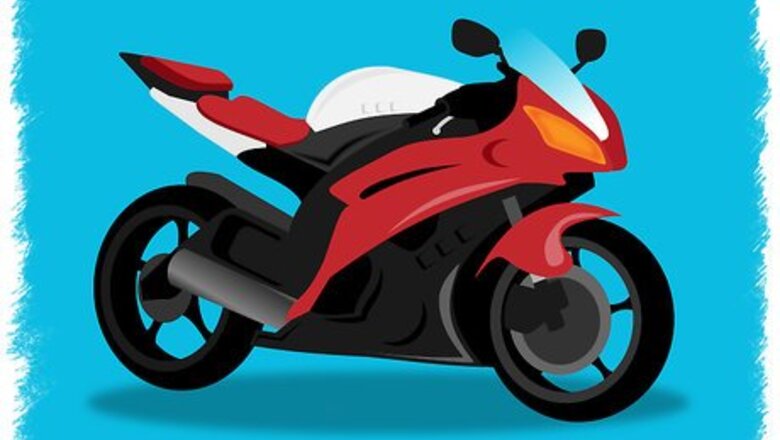
views

Buying a motorcycle. There are several questions to take into consideration when choosing a motorcycle. Do you really want or need a motorcycle? What is your price range? What is an appropriate displacement, weight and type within your skill set? What is the intended use for the motorcycle? Should the motorcycle be new or used. If used, what is the condition of the motorcycle? Can you ultimately be satisfied with your purchase? Where can you find the right motorcycle for you? How will you pay for the motorcycle.
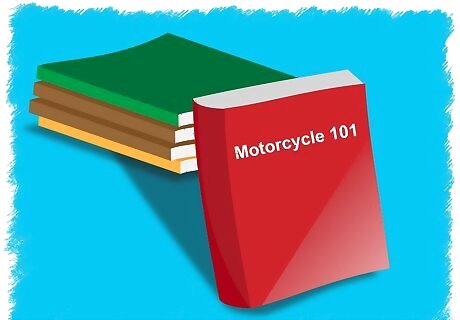
Do I really want or need a motorcycle? A motorcycle is a unique form of transportation which is not for everyone. The first question you must ask yourself is do you really want to ride a motorcycle and why? Only you can answer those questions. One of the best ways to arrive at the answers is to do some research first. Go to your local library and check out books on the subject, such as "Proficient Motorcycling" by David Hough. Speak to motorcyclists and ask them about their experiences, both positive and negative. Watch documentaries about motorcycling such as "On Any Sunday". Also discuss this new interest with your family and loved ones to get their input. Your decision will affect them too. If after following these steps, you are convinced that motorcycling is right for you, the next step is to see what you can afford.
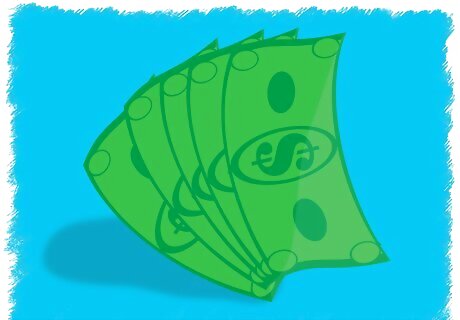
What is your price range? To determine what you can afford, first make a monthly budget. Determine what your cash assets are. Write down your total post-tax income and then your expenses. Subtract your expenses from your income and the remainder (minus a portion as a safety margin), is what you can afford each month. Multiply the monthly amount by the number of months you intend to take in order to pay for the purchase. It should not exceed 60 months. You may apply your cash assets towards the total purchase price. It's important to include a safety margin in your calculations. That way your purchase will not cause a hardship. Also it will increase your chances of being approved for financing. Your safety margin should include additional expenses such as yearly registration, insurance, maintenance and fuel.

Determining the appropriate size & type of motorcycle for you. Motorcycles come in a wide variety of sizes, weights, styles and performance levels. It's critical, both for your enjoyment and your safety that you choose the right one for your intended purposes. Follow these guidelines: Am I a beginning or experienced rider? Do I want to use the motorcycle for sport & recreational use, cruising, long distance touring, commuting or off-road use? Although not critical, your physical size should be taken into consideration as well. Are you tall, short, heavy or light? Generally speaking if you want a motorcycle for long distance use, you should find one with adequate displacement (>750cc) and which is equipped with some kind of luggage and wind protection. If you prefer a cruiser, then a motorcycle with a low frame, low seat and a motor with good low-end torque is the best choice. For commuting, a standard or sport bike will make a good choice. For sports riding, a sports bike is designed for that genre. For off-road use, or on/off road use, choose any number of dirt bikes, enduros or motards. As a rough guide, avoid any motorcycle in excess of 500 pounds or 70 horsepower if you are a beginning rider. New riders should especially be wary of buying a sport bike. A sport bike has a lot of power, light weight, sensitive controls and are not a good learning tool. They are not forgiving. Instead try a standard until you've gained enough mileage and experience to feel confident and safe.
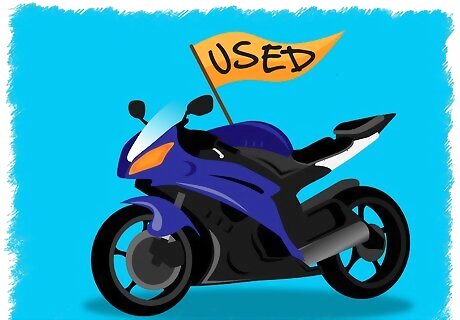
New or used? If you are a beginning rider - it's often best to start with a good, low mileage used machine. This way if you accidentally drop it, or if you outgrow it and need a bigger, more powerful bike later, you haven't lost much in depreciation and repairs. In many cases you may be able to sell your used starter bike for nearly what you paid. If you're an experienced rider, first ask yourself if you're mechanically inclined and enjoy repairing your own machines? If so, a slightly to moderately used bike may be a good choice, which could save you lots of money. You may even desire a much older classic motorcycle which will only appreciate with time. If you're not mechanically inclined and desire reliable day-to-day transportation, then a new bike may be the best choice for you. A new bike often has the added advantage of benefiting from better dealer incentives and financing terms.
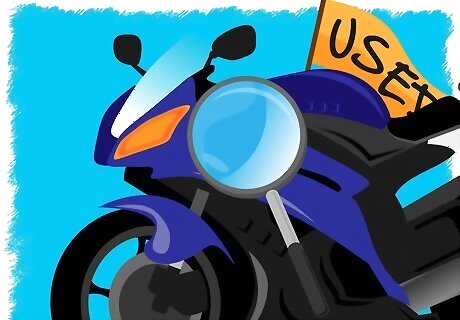
If used, what is the condition of the motorcycle? With any used motorcycle, there is a degree of risk. The history of the motorcycle, including regular maintenance, how it was used or even any accidents may be difficult if not impossible to determine. These tips may help: Ask the owner lots of detailed questions. Although many owners/dealers will not permit this, it doesn't hurt to ask for a test ride on the motorcycle. Only ask for this if you're an experienced rider with a current motorcycle insurance policy that will cover damages in case of a mishap. Ask to see any maintenance logs or receipts. Ask if the mileage is accurate. Examine the title closely for any previous owners and transfers. Make sure the information on the title such as the vehicle year, model and VIN are correct. Make sure there are no lienholders. If the motorcycle doesn't have a clear title - walk away. Examine parts on the bike such as the chain, sprockets, wheels, exhaust system, footpegs, handlebars, grips, levers and bodywork for signs of equal wear, damage, new or mis-matched paint, scratches or signs of recently replaced parts. These usually indicate an accident or possibly higher than indicated mileage. Look carefully for signs of corrosion. Check for any oil or coolant leaks. Ask to hear the bike start and run. It should start easily and idle well once warmed up. Check to make sure that the brakes, clutch, throttle and electrical equipment work properly.

Can you ultimately be satisfied with the purchase? As with making any large purchase, you need to be happy with your choice, as you may be living with this purchase for a number of years. Your answer should be "yes" to all of these questions: Is this a motorcycle you will be proud of? Can you envision this motorcycle in your garage for years to come? Is this the type of bike you can picture yourself on when you go riding with your friends? Will you still believe this is the "right" motorcycle for you 5 years from now? After conducting enough adequate research on this machine, are you convinced that it will be reliable enough and perform to your standards? Will this motorcycle do what you need it to do?
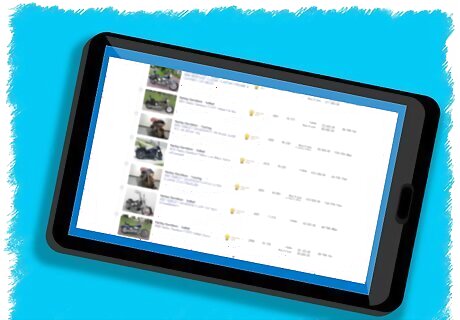
Where can you find the right motorcycle for you? If you are looking for a used bike, there are classified sections in local papers and numerous on-line resources, such as Craigslist, Motorcycle Trader and eBay. If you are searching for a new bike, finding a dealer is as easy as doing a web search for the brand you want on line or searching in the yellow pages. Here are a few tips: If using the classifieds, Craigslist or other venue, be very careful to avoid a possible scam. Always meet the person in a public place and never alone. Let someone else know exactly where you are going. Never give another party a personal check, which will have your bank account number on it. Either bring cash and be prepared to ask for a signed receipt, or bring a cashier's check for the exact amount. Remember if buying on eBay, that it's an auction site, so you will be paying top dollar for your purchase. Once you win the auction, you are obligated to complete the transaction, so be prepared to follow through. Pay close attention to any shipping fees, especially for large items like motorcycles. Ask lots of questions about the item before you place a bid. If using an auction site, do not bid with your emotions. Do not exceed your limit, no matter how nice you believe the bike is. Always research bike values first by using Kelly Blue Book or the NADA guide. You can find their information on-line or at your local library for free. Never pay above blue book. Once you examine the motorcycle in person, take note of any discrepancies or damage. If anything doesn't look right, walk away. When dealing directly with a private seller, don't be afraid to haggle over the price. It never hurts to ask. Always be prepared to pay immediately and in full for a used motorcycle. Make sure you pick it up immediately after the sale and get a signed receipt, signed off title, signed bill of sale, statement of accurate mileage, keys, manual and any spare parts or accessories if they have those.
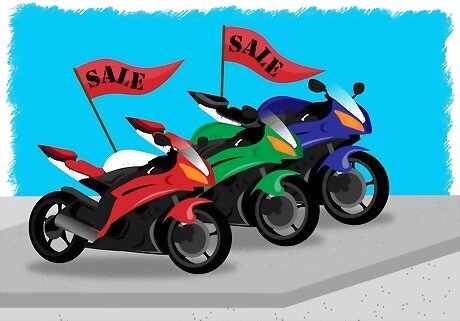
If you are buying a new bike, follow these tips: Find a dealer with a good reputation. Search on-line consumer websites like Yelp or Google for consumer ratings and ask questions. Don't be afraid to visit two or more dealers selling the same product. Question the total amount, including destination charges and assembly charges. Ask to have those waived or reduced. With very few exceptions, it's usually best to avoid optional aftermarket warranty coverage for a new motorcycle. Dealers make a considerable profit on those policies. If you want one, you can often buy them yourself after the sale from various competing companies on line. Do not get into a discussion with the dealer as to how much you can afford each month. Settle the final out-the-door price of the motorcycle first, then discuss financing terms afterwards. Always read the contract very carefully before signing anything, especially the purchase agreement. Do not believe a dealer who tells you that you must have the dealer service your motorcycle in order for the warranty to remain valid. The law states that you have the right to work on your own vehicle or take it to someone else if you wish without voiding the warranty.

How will you pay for the motorcycle? The best method of payment is usually cash in full, as it eliminates a large set of variables from the purchasing process, however with a large purchase, financing is often used. Here's a guide: Put as much down as possible to reduce the term and payment. Do not extend the term beyond 5 years. In many cases, the motorcycle with depreciate enough within the first 2 years where you may find the loan upside down. By choosing a shorter term, you minimize this risk. Do not agree to a payment that will not fit your monthly budget. Make sure the interest rate is clearly stated and that it is not variable. Make sure the payment amount is exactly what the dealer quoted you. If possible, secure financing through your own bank or credit union prior to negotiating the sale. Credit unions often will offer low rates on vehicle financing. Always get signed copies of any paperwork and keep these for as long as you own the vehicle.
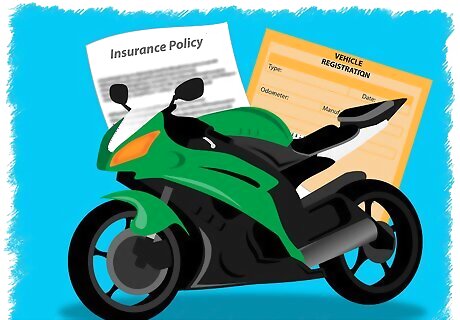
Final tips. Get insurance. Motorcycle insurance for most riders is actually very affordable and there is no reason to delay. Register the motorcycle right away in your name. Your local motor vehicle department will check the VIN to see if there is any problem. Pay the correct taxes for the motorcycle. Do not try to falsify information about the sale amount. If you're a new rider, take a motorcycle safety course, do not carry passengers and be very, very careful.

Enjoy your motorcycle and have fun!




















Comments
0 comment